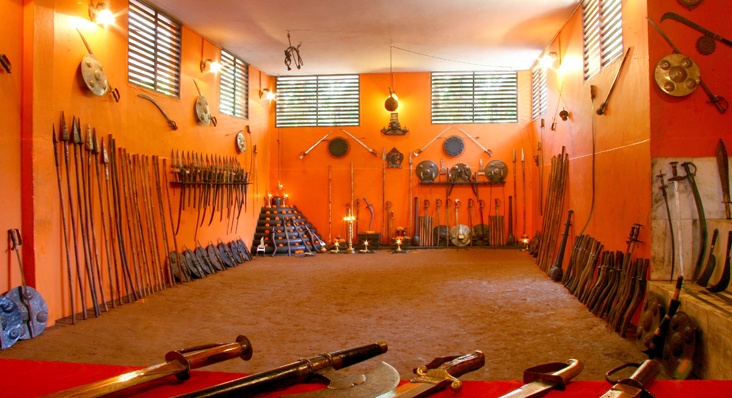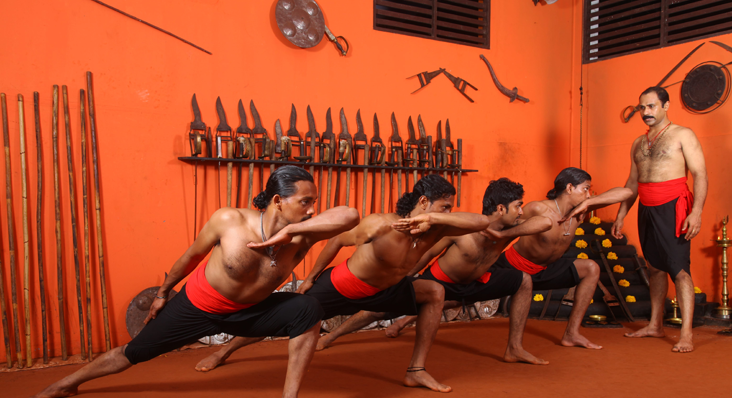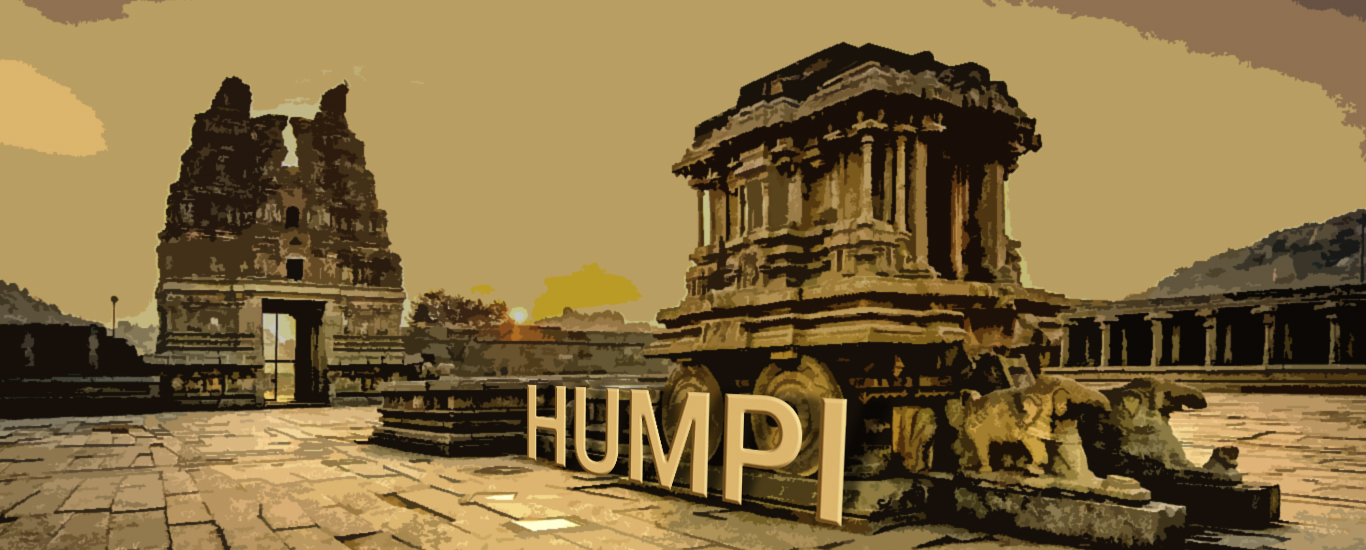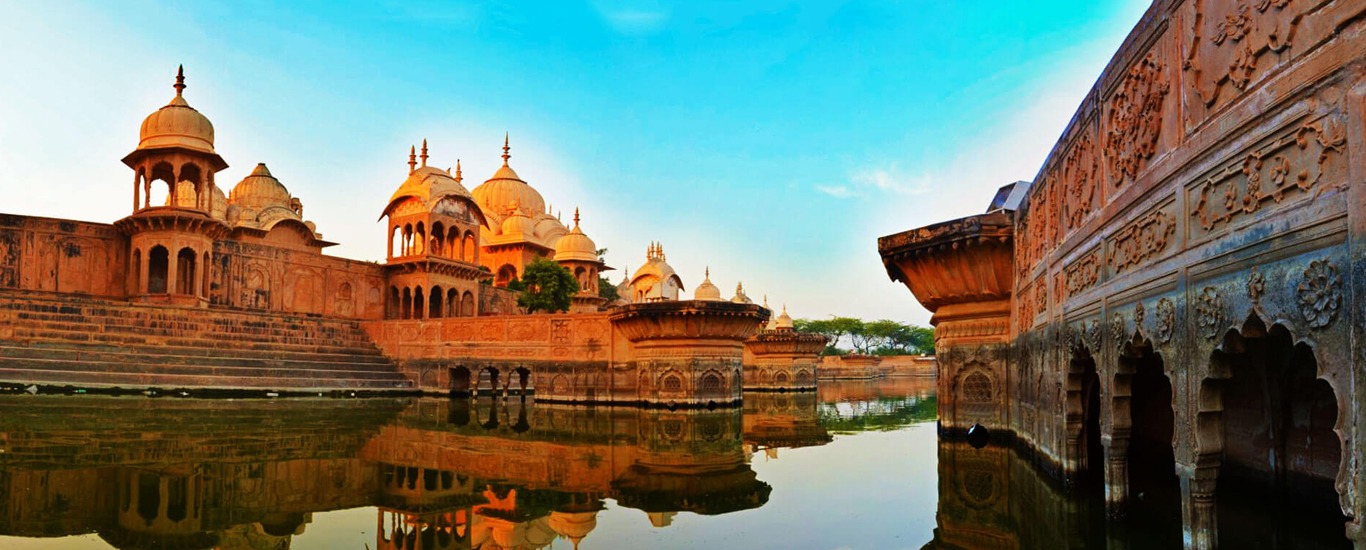Vadakara- kerala, Origin of India’s own Traditional martial arts Kalaripayattu
Kalaripayattu is the most sophisticated ancient martial art in the world. It was born in Kerala, a small state in South India, and precisely for that reason, its history is inextricably linked to the social and cultural life of the land. It is a platform that removes all the weeds of the human mind, body, and society. 5000 years back in India naatu vaydhyar (village doctors) of Gothra culture gave birth to Kalari. Although tiny differences in regional practices led to variants like Thekkan Kalari, the Southern-style and vadakkan Kalari, the Northern style. KalariPayattu is essentially one in spirit. From its earliest time, it was accessible to all regardless of differences in caste, religion, and gender. The major problems like lifestyle diseases, obesity, internal problems of the human body, addiction to drugs and alcohol could be solved through Kalaripayattu practice, which was a miraculous thing. Making the wellness of the body right from the birth of a child to old age, the holistic Kalari is really incredible. Kalaripayattu in short is the defensive art of Kerala. It is Kerala’s own martial tradition. It traveled abroad and influenced even after martial arts forms and emerged as new martial art forms elsewhere.
The story of the origin of Kalaripayattu is associated with the myth that borders the birth of Kerala. It is believed that after reclaiming the land from the sea, sage Parashurama setup 108 Kalaris or training centers in order to stop the ground from shaking. Historical research of course has another account to offer. It states that kalaripayattu was developed by the soldiers of Kerala when war broke out between Chola and Chera dynasties in the 12th century. According to other historical sources, kalarippayattu was developed much earlier.

Kalaris are constructed in 2 ways, one by digging a rectangular pit on the ground. Which is known as the Kuzhi Kalari where the other is developed by enclosing a flat area of open ground. We can find both small and big kuzhi kalaris, the most common one is 42 feet long and 21 feet wide. The most important spots inside a Kalari are the Poothara and the Guru thara. The Poo thara is found out to be a set of seven semicircular steps. Beliefs vary regarding the significance of the number. According to some, the steps symbolize seven gods that protect the world. According to others, they stand for the Panchendriya’s five sense organs, the mind, and the intellect. The Guru thara is constructed one foot to the north of Poothara. Poothara vandanam is a ritual that every student has to follow before the training begins. It is a native form of worship that involves specific moves and stances. This is the first of the combat training in Kalaripayattu out of the four. The oral commands or The Vaithari made by the Guru or master are rendered in a rhythmic fashion which the students follow implicitly.
The Maithari module includes training in various forms of steps,jumps and stances. With constand practice the students are able to take complete control of their bodily movements. After the students have gained mastery over their bodies, they are introduced to kolthare or combat using various kinds of sticks. Kettukaarippayattu involves the use of long sticks. This is followed by Cheruvadipayattu, using short sticks and Ottapayattu using curved batons. Ottapayatu comes just before Kataarappayattu or dagger fight. One found difference between the two is that the former uses wooden weapons whereas the latter uses metal ones.
After the students have mastered the art of combating with the sticks, they graduate to training in the use of metal weapons. Two weapons commonly used all over the world are Vaal or the sword and Kundam or the spear. Although both are equally important in Kalaripayattu, the Churika or dagger is considered more deadly. A similar weapon that combatants tuck around their waists is the Urumi of whip-like swords. Students who have acquired the ability in the first three combat procedures are considered eligible for Verumkkai or bare handed combat. This helps them in tackling opponents when they are totally unarmed.

After acquiring expertise in Marma Shastra or science of the vital spots of the body, the formal education is complete. In this manner fingers, fists, elbows, knees, feet and even the forehead of a combatant become weapons.
Kalari chikilsa or treatment is famous as kalari payattu. Uzhuchil or massage that is fundamental to the treatment is characterized into three, oil massage, massage using the hands, massage using the feet. When students sustained injuries to their marmas or vital parts of their body, the guru who is also an expert in uzhichil, administers the right treatment, deep knowledge of the Marmas is vital to the Kalaripayattu.
The Northern style of Kalari is also known as Vadakkan Kalari, and is generally categorized as the original form of Kalari. This system places more attention on physical flexibility exercises entrenched on the slogan Meyy kanavanam, meaning, “make the body an eye.” These exercises can be performed individually, as well as in combinations. After completing that meypayattu (a concept similar to kata in Karate) is trained. These are a mixture of flexibility exercises with offensive and defensive techniques, even so, the actual skills are taught very much later. Traditionally, the number of meypayattu depends upon, as per the teaching procedures of the guru. Training is often done in four stages, where the first stage is Meipayattu (training stances), secondly Kolthari (practice with wooden weapons), thirdly Angathari (practice with metal weapons) and finally Verum kai (barehanded combat). Typically, most of the Kalari (schools that teach Kalaripayattu) initiate their training with weapons within 3 to 6 months. certain Kalaris only allow one weapon to be learned per year.succeeding long stick and small stick fighting, iron weapons are introduced. Weapons training is being started with the dagger and sword and then taken by the spear. Every modern school does not use specialized weapons. Bows and arrows were Traditionally used in Kerala and students were trained commonly in these techniques, but are rarely taught today.
Kadathanadu being the home of Kalaripayattu hails a lot of traditions and being The house of battle-scarred clans and legendary Kalaripayattu warriors.
Kadathanad was one such eminent royal house which occupied a place of greatness. The Polarthiries who ruled Kadathanad and the martial arts known as Kalaripayattu which produced formidable warriors made the land well known through South India. In fact Kadathanad was the key center of Kalaripayattu. Splendid descriptions of both are found in the traditional folk songs known as Vadakkan pattu. Kadathanad is stuffed between Korapuzha in the south and Mahe in the north. Its eastern and western boundaries were the Kuttiyadi mountains and Arabian sea respectively. The territory known as Kadathanad is now in the present Vadakara taluk in Kozhikode district. From Kadathanad Kovilakam, A prince got married to a lady from the Polathiri family where their children came to be known as Kings of Kadathanadu. This dynasty long lasted and The members came to be known as Vazhunnavar. They ruled the kingdom as the chieftains of Kolathiri. They assumed the title Rajah instead of the traditional title Vazhunnavar In 1750.
The warrior such as Thacholi Othenan, the hero of the Vadakkan Pattukal (Northern ballads) was of Kadathanad. The region was also the stand of the four Marakkars, the eminent naval admirals of the Zamorin of Calicut, which were Considered to become India’s first naval heroes, they commanded the native resistance on the seas against Portuguese invaders.
Lokanarkavu temple in Vadakara Calicut is considered as the spiritual home of Kalaripayattu and made famous also because of the legendary exploits of the Thacholi warrior clan in popular culture.
“The Thacholi family had no rights over the temple but it is said that Othenan was an ardent devotee of the Mother Goddess, the main deity of Lokanarkavu and he used to seek Her blessings before he set off for each of the 64 duels he fought in his 32 years,” stated by the local historians Vijayaraghavan KC and Jayasree KM, who have written a book on the temple.
There is a very famous family in Kadathanadu called the Thacholi Manikoth. The warrior of Kadathanad, Othenan was born into this family. His father was the leader of Puthuppanam. Thacholi Othenan had 2 siblings, Komapan, his elder brother, and a younger sister whose name was Unichara. He was perfect in his studies under the Mathilur Gurukkal and had a very creative childhood. Once othenan with his friend Chappan went to Valayam. On their way through the Naru Passage they found themselves opposite the Payanadan Chindan Nambiar and his students who were a very famous master of Kalaripayattu. When they reached together face to face, none of them moved from their positions to let the other person pass. When they continued to keep their steps towards each other, they clashed their bodies and both fell into the rice fields as soon as they stood and returned to the passage Chindan Nambiar commanded him for the Angam (a public battle to the death).
“Next sunday you and your people will come to Ponniyam battlefield” Said Chindan Nambiar. When the matter was heard by Othenan’s he became scared for him. He told Thacholi Othenan;
“You know who Chindan Nambiar is, his is an expert on the battlefield. He knows many various fighting techniques”. Not even a single word of his brother scare Thacholi Othenan. His brother then ordered “you should go to Chindan Nambiar and apologise”. With such pressure being built by his brother Thacholi Othenan had finally gone to meet Chindan Nambiar. He went to the masters Kalaripayattu School with gifts of clothing from which was given to him by his brother to apologise, but Chindan Nambiar was not ready to forgive him. He then shouted;
“We will meet on the battlefield”. Othenan then returned home in severe shame and visited Lokanarkavu Temple to pray to the goddess to punish Chindan Nambiar for the shame he brought to Thacholi Othenan and The news had spread almost everywhere.
Finally othenan then went to Payampally Chandu’s home to learn many special techniques. He was then ready to go to the battlefield with his brother Komappan and Payampally Chandu. When he reached his destination he saluted his goddess and the Kalaripayattu goddess. At the time Chindan Nambiar also arrived at the battlefield. They began under the laws of the Battlefield, both of them changed techniques against each other. Ultimately Othenan applied his one special technique that was taught by Payampally Chandu called Poozhikadakan. This blended up the dust into the air causing the people watching to step back. When the soil settled the surface they all saw Othenan grab Chindan Nambiar’s body. Thacholi Othenan asked the people;
“Do you want me to kill Chindan Nambiar?”. All of the people replied in accordance.
“Yes, kill him”. Othenan then killed Chindan Nambiar and ripped his head off.
Unniyarcha (also spelled as Unniarcha) was a phenomenal warrior and heroine cited in a set of ballads from Kerala the Vadakkan Pattukal, a state in southwestern India. She was from Puthooram Veedu in Kadathanad and a member of Chekavar (Thiyyar) family. Her father’s name was Kannappa Chekavar. She was assumed to have lived in the northern part of Kerala during the 16th century. She is a popular character in Kerala’s folklore, and was observed for her boldness and skills in Kerala’s native martial art, Kalaripayattu. According to legend, Unniyarcha was most known for her deadly skill with the whip-like Urumi, a unique type of sword that is native to Kerala and Sri Lanka. Like most traditional Kalaripayattu practitioners, she began training kalari at the age of seven.
Thacholi Chandu was a hero and a legendary warrior who is believed to have lived during the 17th century in North Malabar region of Kerala, India. He was a member of the Thacholi family of Nair community. Chandu’s wife was Thayattu Madathu Mattu Kutti. He is admired about in ballads of North Malabar the Vadakkan Pattukal. He was the nephew of the warrior Thacholi Othenan. Thulunadan fort was owned by Kandar Menon who was an expert in martial arts. No one was able to defeat his fort because he had 17,789 weapons and one lakh soldiers. Thacholi Othenan the legendary hero could not even conquer the Thulunadan fort. That was when one day Chandu’s wife Mattu Kutty was on the way to the Omaloor Kavu temple. Kandar Menon was admired by her beauty and kidnapped her. This news had reached Chandu’s ears and disguised as a sage and went to the fort as Kandar Menon was kind to sages and allowed him in. during the night he managed to kill all the soldiers. When Kandar Menon woke up, he saw blood shed. Chandu, who transformed into his original form and set angam (war) with Kandar Menon. Chandu applied ullivettu to kill Kandar Menon.
Aromal Chekavar or Aromal Chevakar was a legendary warrior from north Kerala, a small state in south India. He was believed to be lived in the 16th century and he is also a warrior figure of northern ballads Vadakkan Pattukal. He is also the brother of Unniarcha, another phenomenal warrior figure of the same ballads. The songs and chronicles have kept the legend alive until now. He was born to an Ezhava chekavar family of northern Kerala known as Malabar and the famous Puthooram Veedu. Unnikannan His brother was also a famous warrior. He was skilled in the martial arts of Kalari. He is admired for his bravery in Vadakkan Pattukal.
Mostly addressed as Kadathanadan Simham, Kurroolli Chekon a 19th century warrior in Vadakara North Malabar was a Thiyyar warrior, who fought against the caste oppression by the Savarnas.
Meenakshi Amma who was born in 1941 is a professional and teacher of Kalaripayattu, a traditional martial arts form of Kerala, India, she received Padma Shri, India’s fourth highest civilian award In 2017. She hails from Vadakara, a town in northern Kerala. Year by year, 150 to 160 students learn the martial arts in her school Kadathanadan Kalari Sangam. She has been teaching for more than 56 years. She had been introduced to Kalaripayattu at the age of seven under V P Raghavan Master, with whom she got married to at the age of 17. After her husband’s demise in 2007, Meenakshi Amma took over the power of the Kadathanattu Kalari Sangham introduced by her husband. She is experienced in using all the weapons ranging from the stick to the urumi, which even the experts find difficult to master.
The martial arts, which has been visited by many students even from abroad, still possesses the traditional value system. There is no specific fee for the classes as the money is accepted in the form of dakshina and expenditure for the oil used in Kalari.
The whole family of Meenakshi Amma’s is into Kalarippayattu, Her two sons and two daughters is also skilled in Kalaripayattu from the young age of six where one of her sons is also a kalaripayattu (Gurukkal) teacher now.
Thus kalaripayattu that encompasses training and treatment is an indigenous martial art form of Kerala that has no peers. so that it is witnessed that thousands of people from all over the world come to this tiny land in search of Kalari. They gain this precious knowledge and return, their hearts bursting with a sense of gratification.



